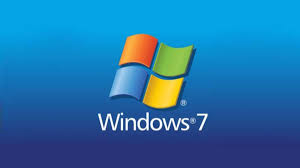The end of life for Windows 7 Professional marked a significant shift for businesses that relied on this operating system. As Microsoft ceased support for Windows 7 Professional, organizations faced the challenge of adapting to new technologies and ensuring the continued security and efficiency of their operations.
1. security risks
One of the primary concerns for businesses using Windows 7 Professional after its end-of-life date is security. Without regular updates and patches from Microsoft, systems become vulnerable to security threats such as malware, viruses, and cyberattacks. Businesses must take additional measures to protect their data and network infrastructure.
2. compliance issues
For businesses in regulated industries, using an unsupported operating system can lead to compliance issues. Many regulations require organizations to use up-to-date software to ensure the security and privacy of sensitive information. Failure to upgrade may result in non-compliance and potential legal consequences.
3. software compatibility
As technology advances, software developers focus on creating applications for newer operating systems. Businesses running Windows 7 Professional may encounter compatibility issues with new software, making it challenging to stay current with industry standards and productivity tools.
4. increased maintenance costs
Maintaining an unsupported operating system can lead to increased costs for businesses. Without official support, organizations may need to rely on third-party solutions and additional IT resources to address issues and ensure system stability. This can result in higher maintenance and support expenses.
5. productivity impacts
Businesses that continue to use Windows 7 Professional may experience productivity impacts due to compatibility issues, security risks, and performance limitations. Upgrading to a newer operating system can help improve efficiency, provide access to new features, and enhance overall productivity.
6. planning for migration
To address the challenges of Windows 7 Professional end-of-life, businesses should develop a migration plan. This plan should include assessing current systems, evaluating new operating systems, and implementing a phased approach to upgrade. Proper planning ensures a smooth transition and minimizes disruptions to business operations.
Conclusion
The end of life for Windows 7 Professional presents several challenges for businesses, including security risks, compliance issues, software compatibility, increased maintenance costs, and productivity impacts. Developing a comprehensive migration plan and transitioning to a newer operating system can help businesses address these challenges and continue to operate effectively in a rapidly evolving technological landscape.


